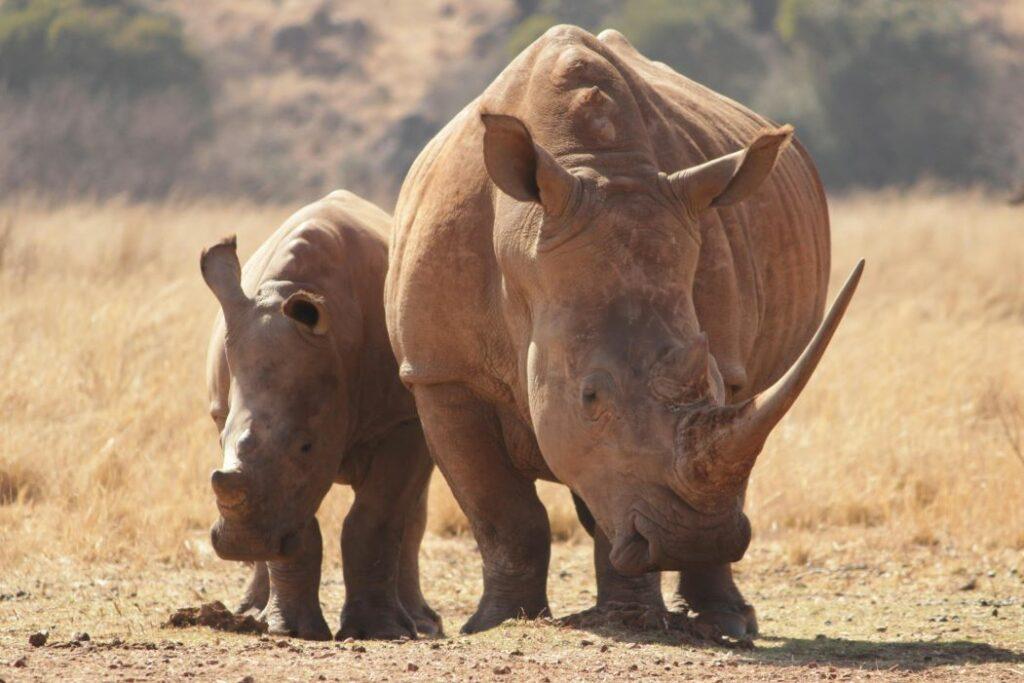Successful Rhino hunts, for both White and Black Rhino’s have always been a milestone achievement for African big game hunters.
Modern day chatting about Rhino hunting can become a very touchy and emotional subject, where unfortunately incorrect opinions are often based on emotions, hearsay, speculation and not facts. In past years, Rhino populations have been hunted almost to the point of extinction by poachers, who place little or no value on the lives of these remarkable and amazing animals.
Sustainable Rhino hunting practices gives these animals great value. Older bulls, way past breeding are targeted, creating a platform for a rewardable and humane hunting safari.
The reality is that in Africa if it pays it stays. At present, there are more Rhino in Africa than in the last thirty years, thanks largely to financial contributions of big game hunters contributing financially to protecting the species for years to come.
Black Rhino hunting can only take place in Namibia or South Africa, with each of these countries issuing only a handful of permits every year.
According to data released by Save the Rhino Foundation, Rhino population estimates are as per the below table.
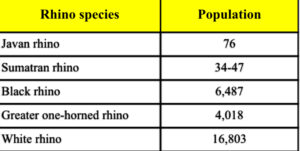
[DYNAMIC-BLOGTABLEOFCONTENT]
What is the difference between a White And Black Rhino?
Black Rhino are smaller that White Rhino is overall body size, and have a shorter and smaller head, rounded ears and a hooked upper lip. Black Rhino are almost exclusive browsers and as such forage mostly on leaves. Black Rhino tend to be far more aggressive than White Rhinos and will gladly charge the hunter without being provoked.
White Rhino have a broader more prehistoric head and are grazers, thus using their broad muzzle to graze on a variety of grasses. White Rhino and more social and normally only aggressive during mating season or fulfilling their parental responsibilities. Black and White Rhinos both have two horns which continuously grow.
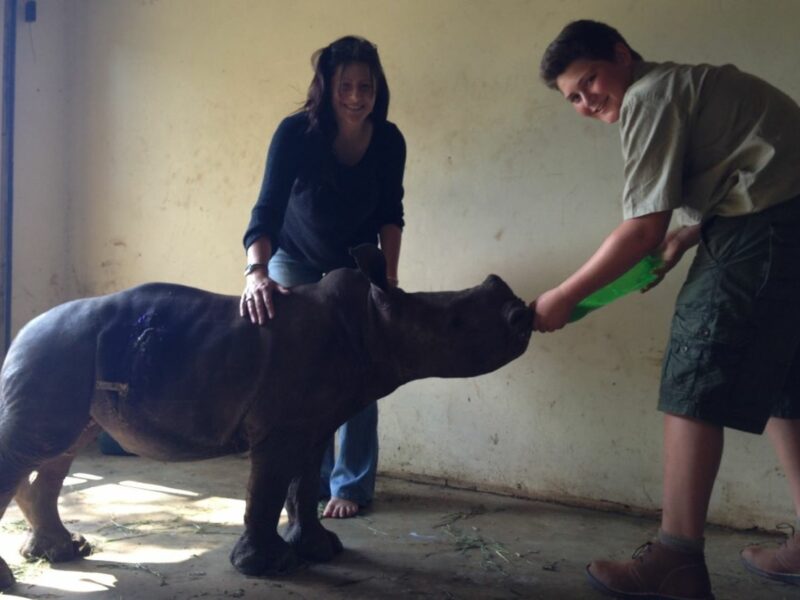
Rhino Hunting, the Green Hunts
With so much emotion being widespread with regards to perceptions around Rhino hunts, Rhino green hunts are becoming increasingly popular. In this instance, a green Rhino hunting safari is marketed and the Rhino, instead of being killed using a high-powered rifle is in fact darted with a tranquilizer.
The hunter can then quickly move into position and get his/her picture taken with the Rhino. The Rhino can then be examined by a veterinarian, treated for any animal health issues, be given the antidote, rise and happily continue and go about his daily activities.
How much will a Rhino Hunting Green Safari Cost?
A green Rhino hunting safari will cost the hunter between US $ 7000 and US $12000 for a three-night hunting safari. This safari cost would include accommodation, dinners and drinks.
How much will a White Rhino Hunting Safari Cost?
A fully exportable White Trophy, exportable under CITES will cost between US $22500 and US $ 25000 and will include the CITES permit fee of US $1500. The Rhino hunting safari will normally take place in a three-to-four-star lodge and be for a period of four nights including road transfers.
How much will a Black Rhino Hunting Safari Cost?
As Black Rhino hunting permits are often auctioned to raise funds for the protection of the species, a Black Rhino hunting safari can be sold for hundreds of thousands of US Dollars. Few permits are issued for Black Rhino, and it is difficult to quantity an average amount for a Black Rhino hunting safari.
A Rhino, brief Description of your Foe
A Rhino, White or Black is built like a Military tank or armored vehicle. These prehistoric machines, while having extremely poor eyesight, have an excellent sense of hearing and smell and pound for pound are the toughest of all the dangerous 7 members, the others being the African Elephant, Cape Buffalo, Crocodile, Hippo, Lion and of course the Leopard.
These animals can charge at a speed, often catching the hunter off guard, making for a challenging walk and stalk Rhino hunt.
What exactly is defined as Rhino Trophy Hunting?
Rhino trophy hunting is defined as “a selective and specific legal use of wildlife that involves the payment of hard currency for the privilege of a hunting adventure with the end goal being to harvest a trophy White or Black Rhino. Trophy hunters generate millions of Dollars which get channeled back into various Rhinio conservation initiatives.
Canned Rhino hunting is where the Rhino is kept in a small enclosure of a few hundred acres increasing the likelihood of the hunter making a successful kill. This method of safari hunting is often described as contravening the hunting principles of “fair chase.”
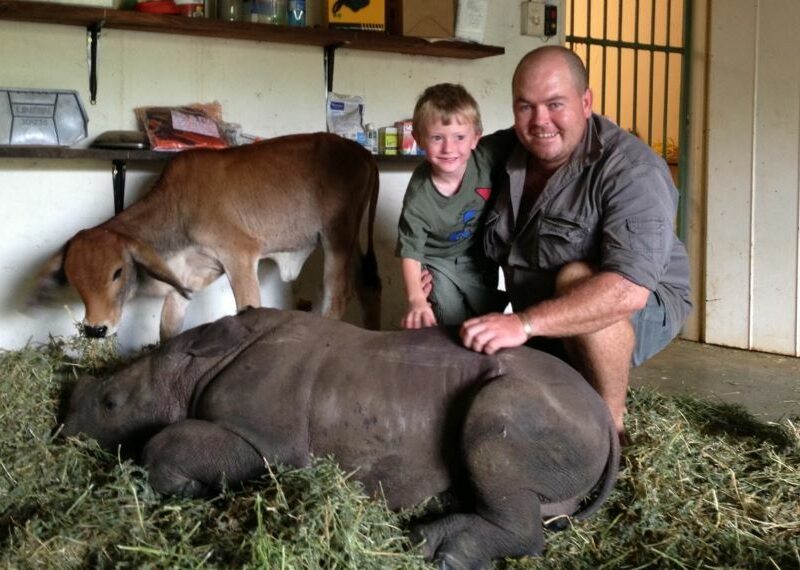
What species of Rhino are currently affected by legalized trophy Rhino hunting?
South Africa legalized the hunting of White Rhino in 1968 and at present, Namibia and South Africa are the only two African countries where the hunting of these two Rhino species is legally allowed, of course under strict conditions as would be expected.
CITES (The Convention of International Trade in Endangered Species) approved quota for Namibia and South Africa in 2004 for Black Rhino hunting.
How is a Black Rhino selected for the purpose of Black Rhino Hunting?
Black Rhino’s selected for the purpose of hunting are selected on the basis of age and are post reproductive. Often these older bulls, which add no value in terms of spreading genetics are aggressive, territorial and will challenge and possibly injure younger Rhinos who are still capable of adding to the gene pool. These “problem” Black Rhinos are often then offered on an auction basis with proceeds being allocated to wildlife initiatives.
CITES, will also then get involved with the export of the Black Rhino trophies, which is usually the head and shoulders, or in some instances the entire body of the Black Rhino.
The impact of legalized Rhino hunting on Rhino population numbers
Following 1968, when the legal Rhino hunting initiatives were introduced, Rhino numbers have substantially increased. White Rhino populations have dramatically increased from roughly 2000 Rhinos, to in excess of 20000.
Black Rhino populations numbers have shifted from 3500 estimated in 2004, to over 6000. Private land owners are thus financially incentivized to conduct legal and controlled Rhino hunting. In countries such as South Africa, more than half the ownership of Rhinos rests with private ownership.
How Rhino Trophy Hunting different to poaching?
Trophy Rhino hunting targets old and mature Rhino bulls. Poachers, target any Rhino, male, female and even the unborn Rhino calves. Poaching does not generate any income or contribute to the sustainable utilization of wildlife.
A brief history of Rhino Hunting
Historic uncontrolled and poaching (illegal hunting) along with large scale loss of habitat saw a drastic decline in all species of Rhino. Rhino numbers, across Asia and Africa were materially affected by these actions.
Surplus Rhino’s were moved to new areas to set up new populations and hunting of a handful of old and mature bulls generated cash flow to invest into breeding and management programs. Modern day poaching is still a material problem as the demand for Rhino horn products from the Eastern countries has not waned.
Legalized Rhino hunting programs are conducted annually and unlike poaching, Rhino hunting is selective ensuring sustainable usage of natural resources.
Rhino Hunting and the benefits enjoyed by local communities
In many conservancies, local community members are directly involved in the protection of the species, just like with private ranch owners. Again, we reiterate that in Africa, if it pays it stays and local community members want to see a direct monetary benefit from having these animals on their land, else it would just be utilized for domestic livestock.
Rhino trophy hunting generates cash flow for community development and upliftment schemes and as such, community members endorse Rhino hunts and contribute to protecting the species.
Namibia, out of all the African countries has been a leader in terms of encouraging and implementing successful community-based schemes managing the natural resources of the country. In 1997, the Namibian Government implemented and established the GPTF, namely the Game Products Trust Fund. Funds generated by Rhino hunting and other activities are channeled into the fund, where proceeds are then allocated to NGO’s, Ministry of Environment and Tourism for the use in wildlife management and sustainable usage of natural resources.
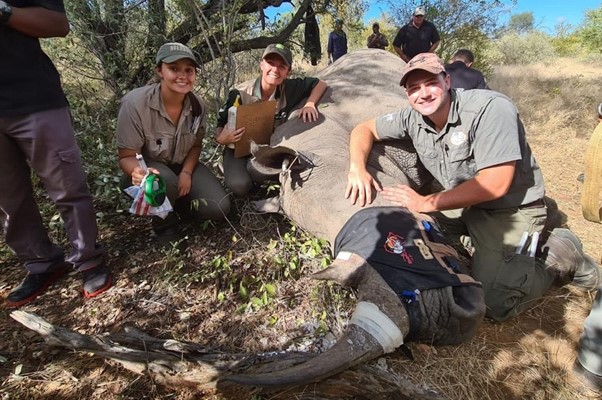
How exactly does legal Rhino hunting operate?
History has taught conservationists that the best way to counter the threats induced by poaching is to increase the amount of spent on security as well as ensuring Rhino population growth rates.
The majority of Rhinos, both White and Black in South Africa and Namibia are found in fenced off areas. Population numbers rend to decrease when the ranch reaches maximum carrying capacity. Older bulls are then hunted, sold or donated. Funds generated by these legal Rhino hunts are then spent on acquiring new genetics, transporting Rhinos and animal health programs.
Why do people hunt Rhinos?
Rhinos are hunted by trophy hunters for their horns and skin as part of the African big five hunts. Rhino trophy hunters understand the importance of wildlife management and conservation efforts and spend fortune on African hunts and a dream Rhino hunting safari.
What is the best caliber rifle to use when hunting Rhino?.
White and Black Rhinos are both called pachyderms.
What is a pachyderm? A pachyderm is an animal with incredibly thick skin and only the highest quality solid bullets will be able to penetrate, regardless of what caliber the hunter decides to use.
When it comes to Rhino hunting, the larger the caliber of the rifle the better. The minimum legal requirement is to use a .375 shooting 300 grains of quality ammunition.
Shot Placement when Rhino hunting (Black and White)
Like with all big game hunting, in order to ensure a quick and humane kill shot placement is critical.
The preferable kill shot on a Rhino would be from the broadside. Aim up the foreleg, identify the prominent skin fold and aim about eight inches above. The bullet will enter the heart and if missed, will penetrate the lungs.
The frontal brain shot is only to be considered when the Rhino is charging.
Follow up, or fleeing shots are taken from the rear position. The hunter will need to aim for the root of the tail where it joins the spine or aim for either the left or right hip joints in an attempt to anchor the Rhino.
How to determine if the Rhino is a trophy Rhino
The horn of the Rhino will be measured from the base of the longest horn to the tip. This method will apply to measuring both Black and White Rhinos.
Rowald Ward (Using Method 16)
Black Rhino: 22 inches.
Northern Squared-Mouthed Rhino: 28 inches
Southern Squared-Mouthed Rhino: 26 Inches
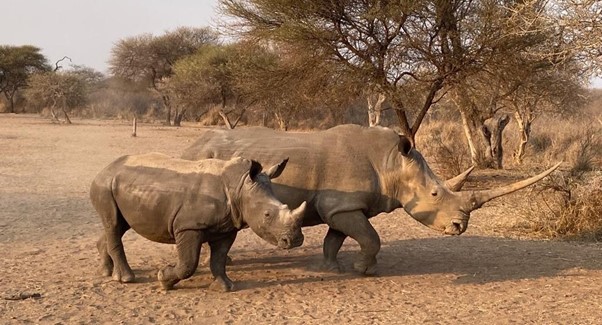
Photographic Rhino Safaris versus Rhino Hunting Safaris
While cash does get generated by Tourism for Rhino hunting conservation, the reality is that not all Rhino viewing areas are scenic, easily accessible or have the four to five-star facilities that tourists demand.
Proceeds from tourism are not always dependable, where big game Rhino trophy hunters are consistent and dedicated to the cause, and not that “fussy.” Hunters are prepared to travel to remote Rhino hunting destinations. The reality is that funds generated by legal Rhino hunters exceed the cash generated by photographic tours.
When is the best time to hunt Rhino?
Rhino hunting is best in the late (magic hour) hours of the afternoon or early in the morning when these animals are out feeding, drinking and grazing.
In Africa, the months between May and August are best as the food is scarce and visibility is optimal. The hunter will not have long grass and shrub blocking the shooting line of site.
Rhino hunting methods
In most instances, specific and selected Rhino bulls are targeted. The hunting safari may make use of a four-by-four truck to scout the area before spotting, and then approaching the specific Rhino on foot.
Conclusion: While trophy Rhino hunting is a major controversial issue, the contributions by big game hunters cannot be underestimated. Illegal poaching remains the biggest threat to our African Rhino populations.
Author: PC van Wyk
